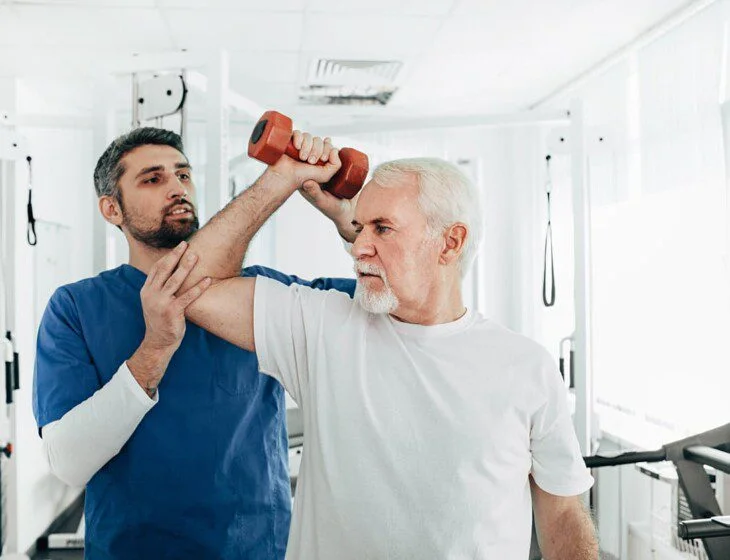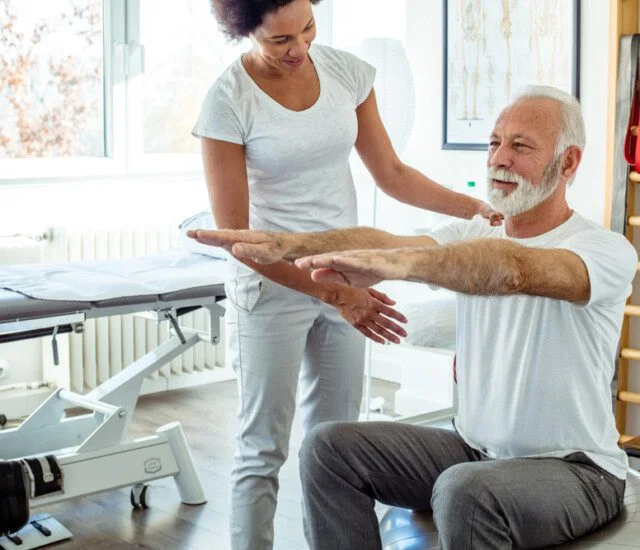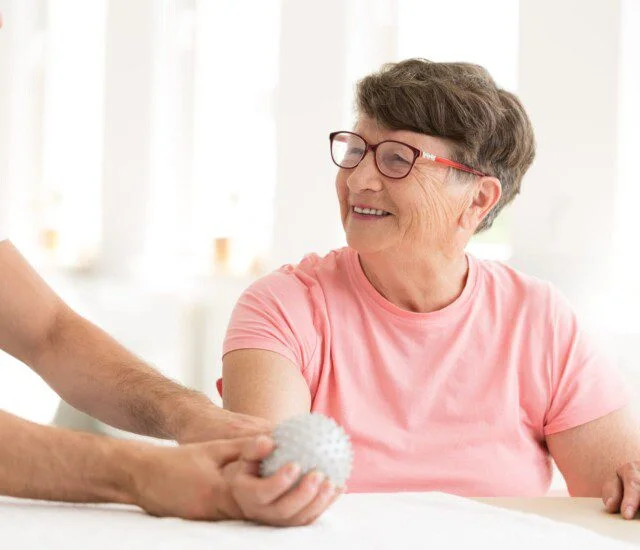The health and well-being of our residents is an essential aspect of independent living at Claridge Court. We want to be able to provide them with the health services they need to live a fulfilling, independent life.
One aspect of everyday life that the residents of our Prairie Village, Kansas, community may take for granted is their range of motion. It is a vital component to performing everyday activities, so maintaining or improving it can make a world of difference in how you’re able to live your life. We have occupational therapists on our team who can help residents measure their range of motion and develop a plan that ensures they’ll be able to perform the tasks of daily living.
Range of motion impacts your everyday life
Range of motion is one of those aspects of your body that you may not fully appreciate until you’ve started to notice that you’re not as flexible as you were once. Maybe it takes you longer to bend down and pick something up off the floor. Perhaps you realize you can no longer easily reach the highest shelf in your kitchen. Your range of motion is in your hips, knees and shoulders, and it is a measure of how well the muscles in those parts of your body are able to move.
If you suffer from a range of motion disability, it can have a dramatic impact on your daily life. Not only can it affect your mobility, but it can also prevent you from completing even the simplest daily activities, including self-care tasks, housekeeping chores and even social activities.
Occupational therapy can help you regain your sense of independence.
Occupational therapy can improve your range of motion
You’ve probably heard of physical therapy. Occupational therapy is not all that different, with one key exception. Physical therapy is limited to a specific movement of the body. Occupational therapy takes a more holistic approach, focusing on your ability to perform daily activities.
An occupational therapist evaluates your current level of function and performs an activity analysis to determine how best to address your needs. By tailoring the therapy to your specific circumstances, the occupational therapist can develop activity modifications and compensatory techniques to help you perform daily activities at your greatest level of independence.
You would be involved in identifying and setting the goals for your own therapy. Treatment plans can include therapeutic activities and exercise, orthotics, joint protection and energy modification, sensory re-education, mirror therapy, pain and scar management, work conditioning and training in activities of daily living and adaptive or assistive devices.
Hip Range of Motion
If the range of motion in your hips is impaired or limited, an occupational therapist may recommend lower body dressing, tub transfers, navigation of steps, neuromuscular reeducation or positioning (if wheelchair- or bed-bound). You want to keep your hips as loose and flexible as possible. After all, they are the center of movement for your body. Improving or maintaining the range of motion in your hips can enable you to perform a variety of daily tasks.
Knee Range of Motion
You need to be able to bend and straighten your knees to perform any number of activities, from riding a bicycle to taking a stroll outside. Consider working with an occupational therapist if you are experiencing limited or impaired movement in your knees. They may develop a plan that includes lower body dressing, navigation of steps, neuromuscular reeducation, positioning (if wheelchair- or bed-bound) and performance of functional transfers to the toilet, tub or shower.
Shoulder Range of Motion
Think about how much you use your shoulders every day, often for tasks as simple as picking something up off the floor or bringing something down from a shelf. Limited range of motion in your shoulders can make daily life difficult. To help ensure you have sufficient range of motion in your shoulders, an occupational therapist may suggest a variety of treatments, including upper body dressing, upper body bathing, exercises with dowels, pulleys and a wall ladder, neuromuscular reeducation or neuromuscular electrical stimulation (NMES).
Range of motion is essential to truly independent living
Freedom is essential to independent living — literally and figuratively. You need to be able to move around freely and perform activities of daily living on your own. That is why taking steps to improve or maintain sufficient range of motion is important to your personal health.
If you are experiencing range of motion issues that are impacting your ability to complete daily activities, talk to the occupational therapy team at Claridge Court to see if they can help improve your mobility for enhanced functioning in your everyday life.
If you’d like to get more information on Claridge Court Health Services or about our community, fill out the form below or call us at 913-383-2085.


